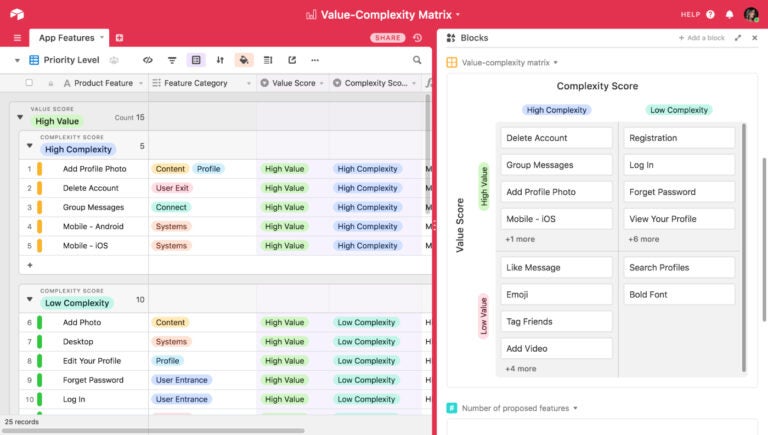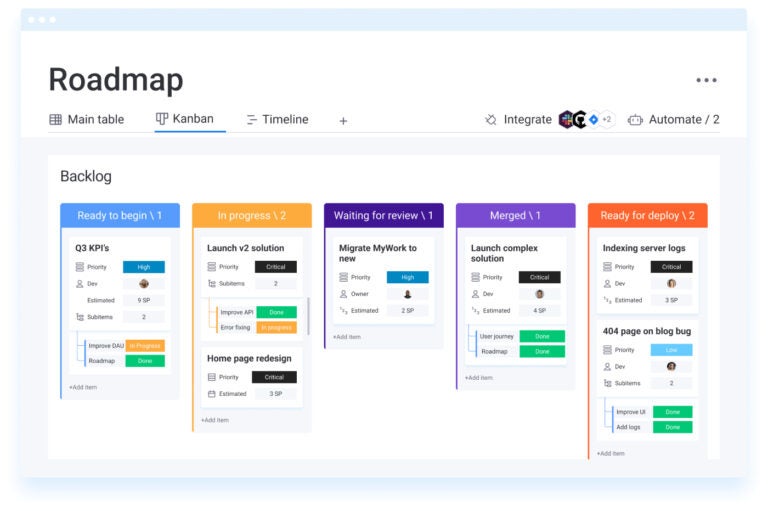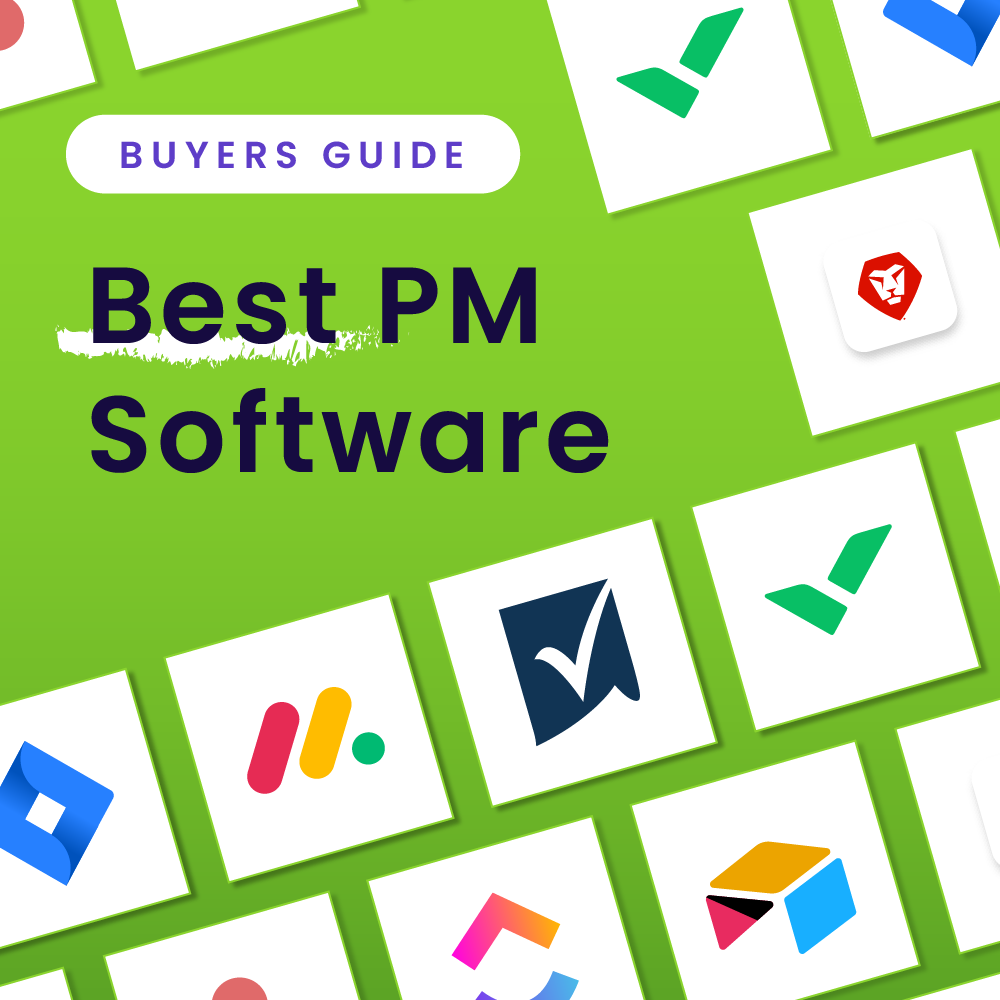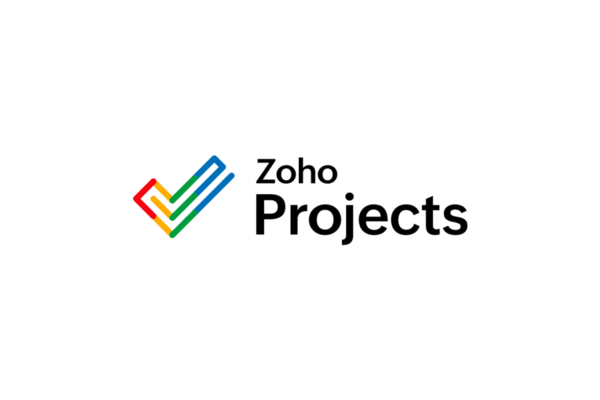Key takeaways
In the rapidly evolving world of project management tools, Airtable and monday.com stand out as two of the most popular and powerful platforms. Both are designed to streamline workflows, boost team collaboration, and improve productivity — yet each tool offers unique features that cater to different types of businesses and project management styles. Read on to learn the differences between Airtable vs monday.com, where each tool stands out, and the use cases they are best utilized for.
Airtable: Best for Highly Customizable Databases and Flexibility
Airtable excels in flexibility and creating custom databases. This is ideal for businesses needing more than a basic project management tool. Its spreadsheet-like interface appeals to users who prefer a visual, modular approach to project management.
monday.com: Best for Team Collaboration and Task Tracking
monday.com shines in task tracking and is built for teams needing a user-friendly platform to manage projects efficiently. With predefined templates and automated workflows, it’s perfect for teams seeking quick, out-of-the-box solutions without extensive setup.
Airtable vs monday.com: At a Glance
There are plenty of project management software platforms to choose from, but both Airtable and monday.com offer a compelling set of features:
| Criteria | Airtable | monday.com |
|---|---|---|
| Price | Free tier available; paid plans start at $20/user/month | Free tier available; paid plans start at $9/user/month |
| Core Features | Custom databases, visual interfaces, collaboration tools | Task tracking, project management templates, advanced automations |
| Ease of Implementation | Moderate learning curve; highly flexible, requires more configuration | Easy to implement; user-friendly, with a wide range of templates |
| Collaboration Tools | Real-time collaboration, commenting, revision history | Team communication tools, integrations with Slack, MS Teams, and more |
| Integrations | Integrates with Zapier, Google Workspace, Slack, Jira, and more | Integrates with Google Workspace, Microsoft Teams, Slack, Trello, and more |
| Customization Options | High level of customization for databases and workflows | Customizable workflows, templates, dashboards, and automation options |

Airtable Overview
Airtable merges the functionality between spreadsheets and databases, offering an intuitive interface for managing projects. While it resembles Google Sheets or Excel, Airtable’s power lies in designing custom workflows, linking records across tables, and applying various views like Kanban, grid, and calendar.

Key features
- Custom databases: Airtable allows users to create highly customizable databases that can be adapted for almost any use case, from content planning to product tracking and more. Each base (Airtable’s term for a project) can be tailored with unique fields, links between tables, and integrations with third-party tools.
- Different view options: Airtable offers multiple ways to view your data, such as Kanban, calendar, gallery, and grid views. This flexibility makes it easy to visualize projects from different perspectives. The ability to switch views seamlessly enhances the user experience, allowing teams to adapt their project management style according to the task at hand.
- Automation: Airtable includes an automation feature that helps users create workflows that trigger actions based on specific conditions, which saves time on repetitive tasks. Automations can significantly reduce manual work, ensuring that team members focus on high-priority tasks rather than administrative ones.
- Real-time collaboration: Users can collaborate on projects in real time, leaving comments, adding tasks, and tracking changes through revision histories. This feature is particularly valuable for remote teams, as it fosters communication and transparency throughout the project lifecycle.
- Integration capabilities: Airtable integrates seamlessly with a host of other tools, including Google Workspace, Slack, and Zapier, enabling users to extend its functionality. These integrations facilitate a more connected workflow, allowing teams to leverage existing tools while enhancing their project management processes.
Read our Airtable software review.
Pros and cons
Here are some pros and cons of using Airtable for managing your project.

monday.com Overview
monday.com is a robust work operating system designed for managing any type of project. Its simplicity, combined with task management and automation features, makes it an ideal solution for teams looking for a ready-to-use tool.

Key features
- Project management templates: monday.com provides a variety of pre-built templates for different industries and projects, such as marketing campaigns, product roadmaps, and customer relationship management (CRM). These templates not only save time but also serve as effective starting points for teams to customize according to their specific needs.
- Task management: Its core strength lies in task management, allowing users to assign tasks, set deadlines, track progress, and visualize workflows using boards. The visual representation of tasks enhances clarity, making it easier for teams to understand priorities and workflows at a glance.
- Automation: monday.com offers powerful automation capabilities that enable users to set up workflows for routine tasks. For instance, you can automate notifications or status changes based on predefined triggers. This feature helps keep the team informed and ensures that no tasks fall through the cracks.
- Team collaboration: Teams can communicate within monday.com by leaving comments, sharing files, and updating task statuses in real time. This built-in collaboration feature reduces the need for external communication tools, streamlining the project management process.
- Customizable dashboards: Dashboards in monday.com allow users to create visual reports that provide insight into project progress, workloads, and other key metrics. These dashboards empower managers to make data-driven decisions and keep the team aligned on objectives.
Read our monday.com software review.
Pros
Cons
Best for Pricing: monday.com
When comparing monday.com vs Airtable in pricing, monday.com starts at a lower price point, beginning at $9 per user per month, while Airtable’s paid plans start at $20 per user per month. For budget-conscious teams, monday.com is the more affordable choice.
Best for Core Features: Airtable
Airtable excels in customizable databases and flexibility, offering tailored workflows across industries. Its diverse viewing options and ability to link records between tables provide more control for project management.
Best for Ease of Implementation: monday.com
monday.com is the clear winner for ease of implementation. Its intuitive design and pre-built templates make it easy for teams to start managing projects with minimal setup.
Best for Customization Options: Airtable
When comparing Airtable vs monday.com for customization, Airtable’s database structure and flexibility make it the superior choice for complex workflows and industry-specific needs.
Who Shouldn’t Use Airtable or monday.com?
In analyzing Airtable vs. monday.com, both offer powerful features and flexibility for various project management needs, but they may not be suitable for every team or organization. Understanding the limitations and potential drawbacks of each platform is crucial for making an informed decision. In this section, we’ll explore the types of users or scenarios where either Airtable or monday.com may fall short, ensuring that you choose a project management tool that aligns with your specific requirements and operational style.
Who shouldn’t use Airtable
Airtable is not ideal for teams or organizations looking for a simple project management tool with out-of-the-box functionality. Its flexible database structure, while powerful, may be overkill for businesses that only need basic task tracking and workflow automation. Additionally, its steeper learning curve makes it less suitable for project teams that prioritize ease of use and quick implementation.
Who shouldn’t use monday.com
monday.com may not be the best fit for businesses that need highly complex workflows or database management. While it’s great for task tracking and team collaboration, it lacks the flexibility and advanced data organization capabilities offered by Airtable. If your business requires more than standard task management features, you may find monday.com limiting.
Best Alternatives to Airtable & monday.com
Though we’ve established Airtable and monday.com are both powerful project management tools, there are other options worth considering. Here are some alternatives to Airtable and monday.com.
Asana
Asana as a project management tool is known for its robust task management capabilities, providing a comprehensive solution for teams looking to enhance their productivity. One of its standout features is its user-friendly interface, which allows users to easily navigate and manage tasks without a steep learning curve. Asana excels in facilitating collaboration among team members, offering tools such as task comments, file attachments, and team project discussions. This makes it an excellent platform for teams focused on task tracking and effective communication.
Additionally, Asana’s robust feature set includes project timelines that allow teams to visualize deadlines and milestones, as well as task dependencies that help users understand how tasks are interconnected. This feature provides a comprehensive view of project progress, enabling teams to identify bottlenecks and prioritize their efforts effectively.
ClickUp
ClickUp stands out as a highly customizable project management tool that rivals Airtable in terms of flexibility and functionality. It offers an extensive range of features tailored to diverse project needs, including task management, time tracking, and goal-setting, making it an excellent alternative for teams seeking advanced functionality. Using ClickUp for project management gives teams customization options that allow them to tailor their workspace to fit their specific workflows, enabling them to create a personalized experience that enhances productivity.
One of ClickUp’s unique advantages is its variety of visualization options, including Gantt charts and mind maps. These tools enhance project visualization and provide teams with different perspectives on their tasks and timelines, catering to various management styles and preferences. With features like automations and integrations with popular applications, ClickUp ensures that teams can streamline their processes and focus on what truly matters—achieving their goals.
Trello
Trello is a project management tool that emphasizes simplicity and ease of use, making it a great alternative for those who prefer a straightforward approach. With its focus on Kanban boards and task management, Trello is particularly well-suited for small teams or individuals who may not require the extensive features offered by more complex platforms like Airtable or monday.com.
Its visual interface allows users to create boards, lists, and cards that represent tasks, making it easy to move tasks through various stages of completion. This simplicity enables teams to manage tasks effortlessly and to focus on what’s essential without unnecessary complexity or distractions. Trello also supports basic collaboration features, such as comments and due dates, ensuring that team members remain aligned on priorities. For teams seeking a lightweight solution that enhances task management while maintaining an intuitive user experience, Trello is an ideal choice.
Read more: Best monday.com Alternatives & Competitors
Methodology
Bottom Line: Airtable vs monday.com
Choosing between Airtable vs monday.com depends largely on your team’s specific needs and the complexity of your projects.
Airtable is best suited for teams that require flexibility, customization, and the ability to manage complex data across various workflows. On the other hand, monday.com is ideal for teams that prioritize ease of use, task management, and collaboration, especially if you need a solution that can be implemented quickly.
In 2024, both tools remain competitive choices in the project management software space. Ultimately, the best option for you will depend on your budget, project complexity, and how much customization you need in your workflows.





